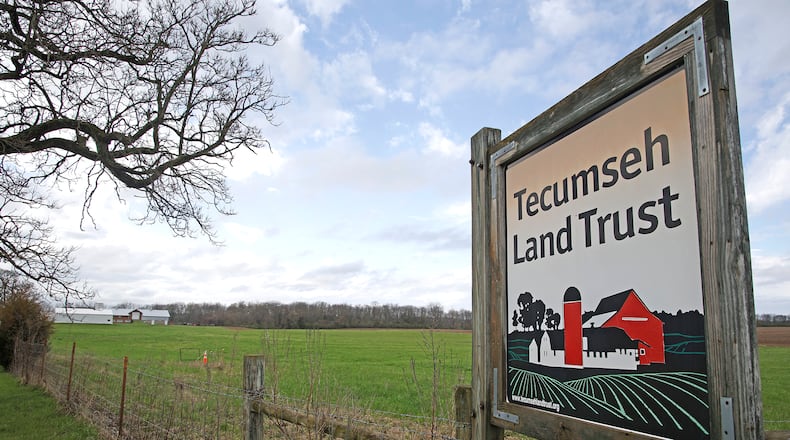“When projects are funded, we permanently protect the farmland through conservation easements, which is a legal document that says how that land can be used. It has to stay available for agriculture,” said Michele Burns, executive director for the land trust. “It stays in private ownership ... it can be managed anyway the landowner wants to manage their land, farming the way they want to farm, but TLT just holds the development rights to the property.”
Relying on the state’s definition of agriculture when it comes what lands can be used for, Burns said it can include things such as commodity crops like corn and beans, vegetables, produce, tree farms and “anything that the state defines as agriculture.”
The land trust’s allocation from the Clean Ohio program is just under $200,000 this year. They match that amount with the federal easement program, which is about $4 million for the whole state, to help fund more farms.
All money funded through the program goes to the farm owners, and TLT is “just the middle person,” she said.
“On thing people like to know is that for most of these farm families, this income is used in some way to reinvest in their operation,” Burns said. “(They’re) putting it back into their operation.”
Clark County commissioners received a request from the land trust in January to support their applications to the state as part of the program to purchase agricultural easements on nine potential properties, according to a board agenda.
“(The program) requires we get a resolution of support from county commissioners to know they support a farmland preservation of some kind. It’s land that doesn’t have plans and has no path of development,” Burns said.
Commissioners reviewed the request and “determined that the nomination of the properties for purchase of agricultural easements is compatible with the county’s goals to preserve and promote agricultural as an important part of the area’s economy.” The board supports the applications and acknowledges participation in the program doesn’t conflict with any existing or proposed land use plans of Clark County.
The nine farmland properties include: 81.44 acres on West National Road in New Carlisle, Bethel Twp.; 127.72 acres on South Urbana-Lisbon Road in South Vienna, Harmony Twp.; 256.81 acres on Plattsburg Road in South Charleston, Harmony Twp.; 65.74 acres on Buena Vista Road in South Vienna, Harmony Twp.; 136.73 acres on Springfield-Jamestown Road in Springfield, Green Twp.; 6.4 acres on Columbus-Cincinnati Road in South Charleston, Madison Twp.; 97.16 acres on North Hampton Road in Springfield, Pike Twp.; 158.66 acres on New Carlisle-St. Paris Road in New Carlisle, Pike Twp.; and 73.59 acres on Stott Road in New Carlisle, Pike Twp.
Burns said the land trust submits an application and gets the funding from the state based on their ranking of each farm land. The highest scoring land gets funded first, then so on until they are out of funds. The state is still working on the ranking order, so it’s unknown which farm lands will be funded yet.
According to the ODA, the Clean Ohio Local Agricultural Easement Purchase Program (LAEPP) provides funding to farmland owners for placing an agricultural easement on their property. The money is issued for up to 75% of the appraised value of a farm’s development rights, and a payment cap has been set at $2,000 per acre, with a maximum of $500,000 per farm. All easement transactions are recorded on the property deed and transfer with the land to successive owners.
“Funds from the purchase of these easements are invested in the local economy by the landowners who use them by expanding their farming operations, purchasing new equipment, reducing debt, adding conservation practices, planning for retirement, sending their children to college or for other purposes,” according to the the ODA.
Burns said there are other program opportunities and that another component of Clean Ohio is properties that are more natural habitats, good water resources or wetland restoration.
“This (LAEPP) is just kind of the big one in our area,” she said. “TLT does this every year, (and) we’ve been purchasing easements since the very beginning. We brought about $35 million into the local economy through these purchase programs.”
Burns said they keep a database of 800 landowners in their service area and send out letters once a year of the programs available to them. If they’re interested, they call the TLT, and a representative talks them through the programs to make sure it’s a good fit for their property and future.
About the Author

